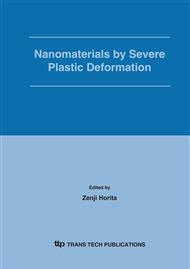p.967
p.971
p.977
p.983
p.989
p.995
p.1001
p.1007
p.1013
Dislocation-Crystal Plasticity Simulation Based on Self-Organization for Repartition of Dislocation Cell Structures and Subgrain
Abstract:
A self-organization model for repartition of dislocation cell structures and transition of subgrains on a three-stage hardening of single crystal are developed. Stress-effect coefficients models are proposed in order to introduce stress information into the reaction-diffusion equations. A FD simulation for dislocation patterning and a FE one for crystal deformation are simultaneously carried out for an FCC single crystal. It is numerically predicted that a cell structures are repartitioned and the generated dislocation pattern in stage III can be regarded as a subgrain.
Info:
Periodical:
Pages:
989-994
Citation:
Online since:
January 2006
Authors:
Price:
Сopyright:
© 2006 Trans Tech Publications Ltd. All Rights Reserved
Share:
Citation:


